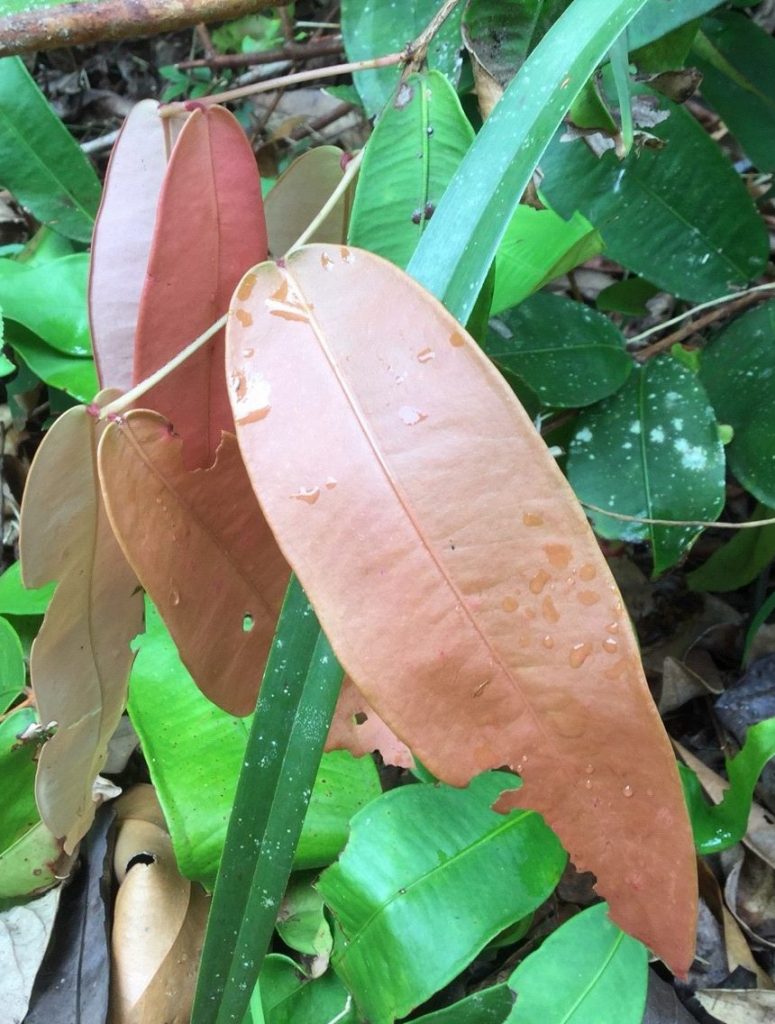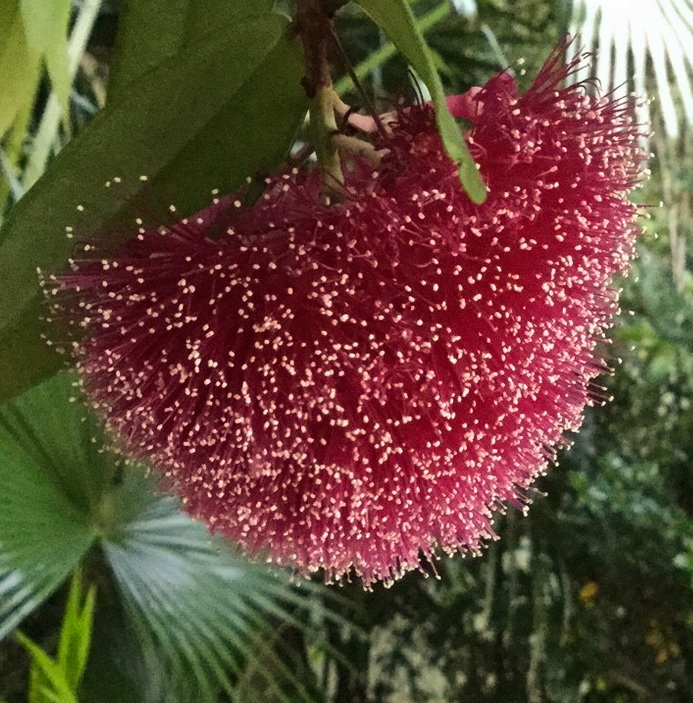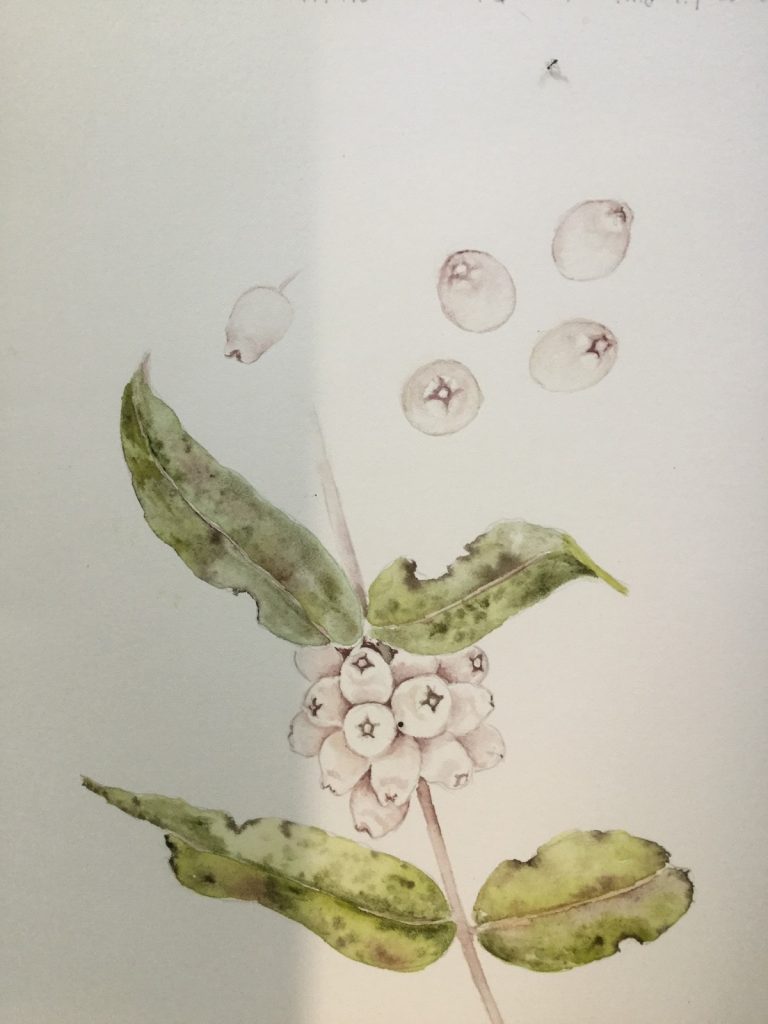Also known as Powder-puff Lilly Pilly and Wilson’s Satinash, this tree was possibly named after Dr Thomas Braidwood Wilson, (1792 – 1843), a botanical collector in the 1890’s.
It is an unremarkable-looking little tree, with its straggly growth under and among the protective foliage of neighbouring trees, but it bears beautiful, pompon flowers which make the plant worthy of recognition. Although not endemic to Paluma, there are several examples of this Lilly Pilly in Paluma gardens. Perhaps the most striking, as it is bearing blooms at present, is in the garden bed beside the office at PEEC. Another small shrub grows in the Trees of Memory grove, alongside the memorial stone.
The natural distribution for this Lilly Pilly is in the rainforest at Whyanbeel, near Mossman to Hinchinbrook Island, at altitudes up to 850 metres.
The leaves of this tree are distinctive. They are simple, alternate or opposite, hairless and can be quite large, growing from 80 – 190 mm by 22 -54 mm. with a recurved margin. New growth is spectacular with deep salmon-pink colouration.
Flowers, growing in axillary or terminal panicles, hang modestly among the foliage and can easily be missed. The individual flowers are tiny, the red trumpet shaped calyx hidden by the dense cluster of magenta to crimson stamens, about 20 mm in length. They form a dense, soft pompon about the size of a mandarin, hence the name powder-puff. An accompanying photo shows the remains of the flower panicle after the stamens have gone. Flowering season can last from June to December.
The fruit of the Powder-puff Lilly Pilly is a fleshy white or cream berry, 10-18 mm long by 10 -16 mm long. It contains one seed. Like most Syzygiums, the fruit is edible but is very sour and unpleasant to eat raw. As I do not have a photo of the fruit, a sketch will have to suffice. Note the ant which was determined to get into the picture!
Next time you stroll around the streets of Paluma, see if you can spot one of these demure little trees.
Text and photos by Colwyn Campbell




